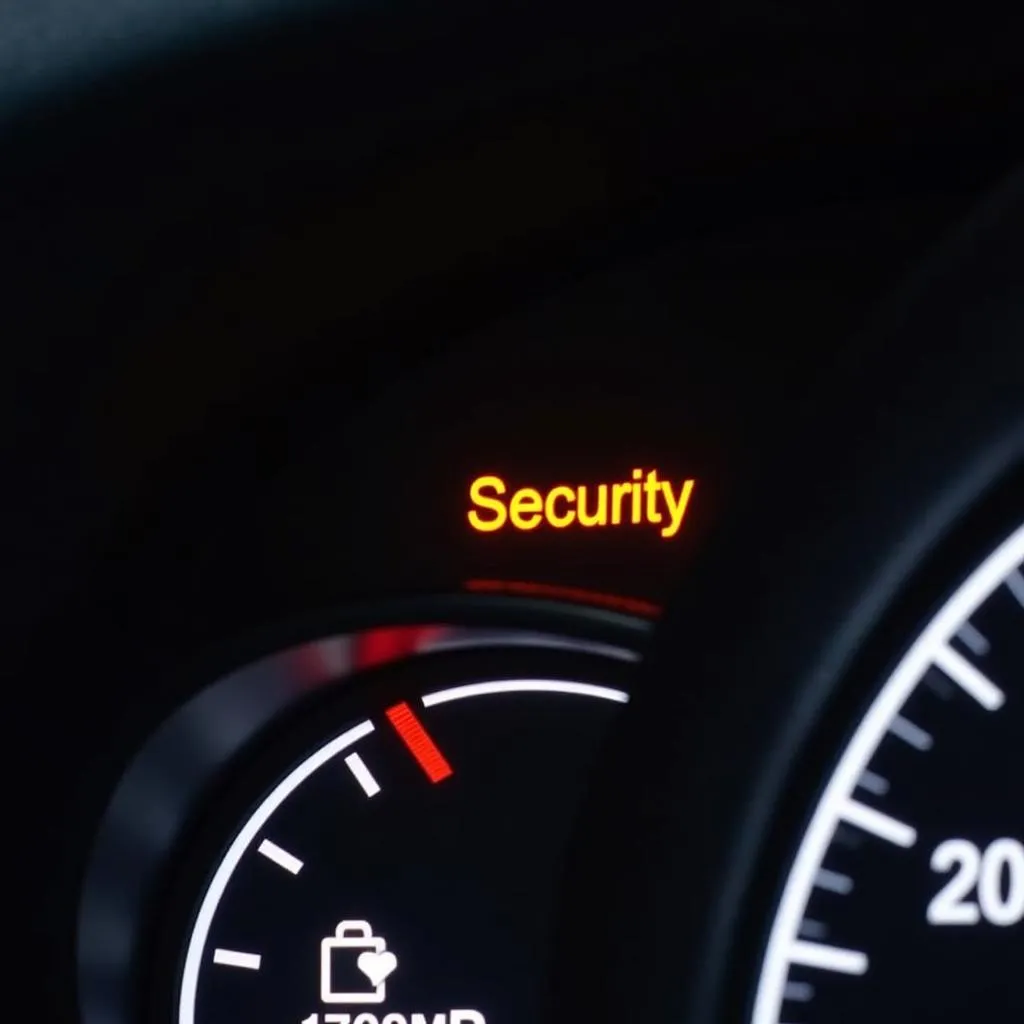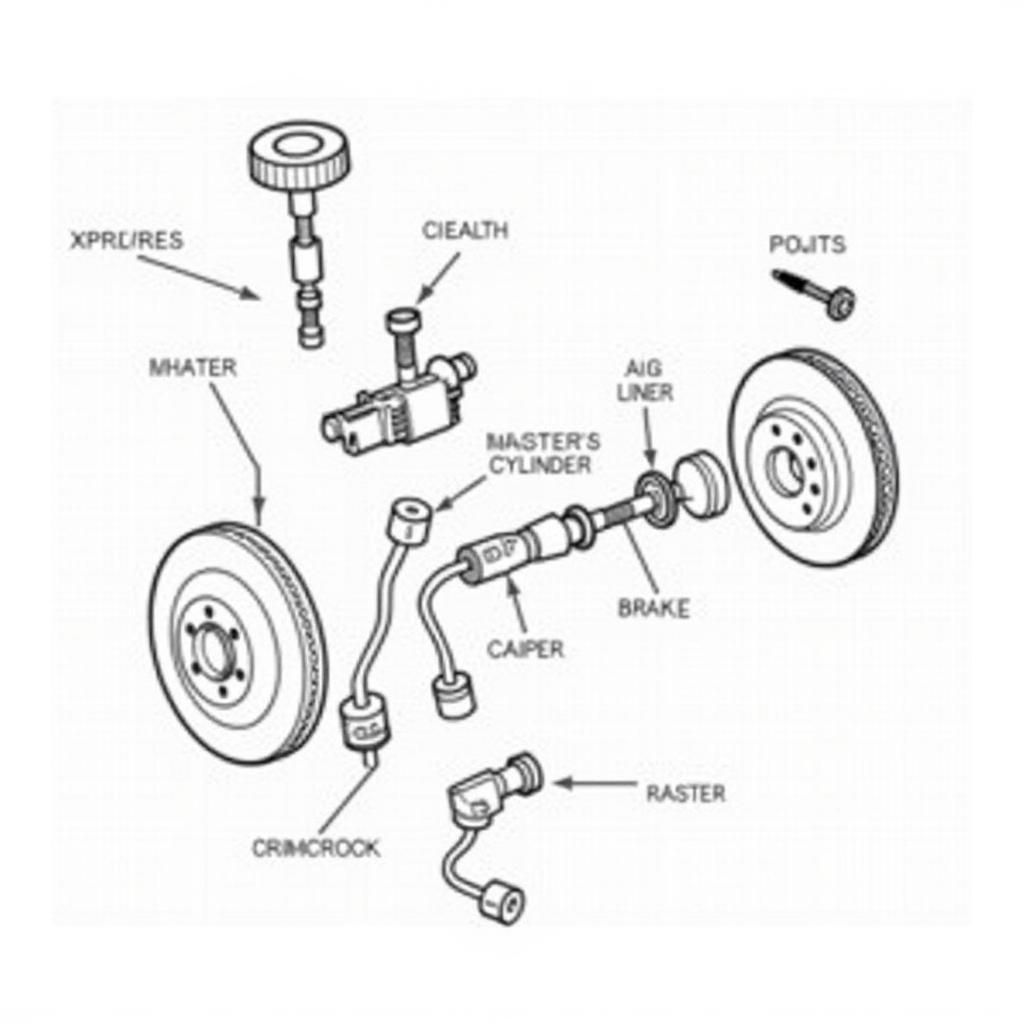A battery warning light on your dashboard can be alarming. It signals a potential problem with your vehicle’s electrical system, specifically related to the battery or charging system. Understanding what triggers this warning and how to address it is crucial for maintaining your car’s health and avoiding unexpected breakdowns. This article provides a comprehensive guide to troubleshooting and resolving battery warning light issues.
Addressing a battery warning light promptly is important to prevent further damage to your car’s electrical system and ensure safe and reliable operation. Here are some common causes and solutions for this issue.
Decoding the Battery Warning Light
The battery light illuminates when the car’s charging system isn’t functioning correctly. This typically means the alternator isn’t providing sufficient charge to the battery, or there’s an excessive drain on the battery’s power. While a failing battery can sometimes be the cause, it’s more often a symptom of a larger issue. If you are experiencing ldv t60 battery problems, then you need to take action immediately.
Common Causes and Solutions
Alternator Problems
The alternator is the heart of the car’s charging system, responsible for generating electricity to power the vehicle’s electrical components and recharge the battery. A faulty alternator is a common cause of the battery warning light. Signs of a bad alternator include dimming headlights, flickering interior lights, and strange noises from the engine compartment. If you suspect alternator issues, it’s vital to have it tested and replaced if necessary.
Loose or Corroded Battery Terminals
Loose or corroded battery terminals can disrupt the flow of electricity between the battery and the electrical system. This can trigger the battery warning light. Inspect your battery terminals for any signs of corrosion (a white, powdery substance) or looseness. Cleaning the terminals with a wire brush and baking soda solution can often resolve the issue. You can find more about car battery signal lights on our website.
Faulty Wiring
Damaged or corroded wiring in the charging system can also cause the battery warning light to illuminate. Inspect the wiring connected to the alternator and battery for any signs of damage or corrosion. Repairing or replacing damaged wiring is essential to restoring the proper functioning of the charging system. Have you checked your dead battery symptoms?
Failing Battery
While less common than alternator issues, a failing battery can trigger the warning light. Batteries have a limited lifespan and eventually lose their ability to hold a charge effectively. If your battery is old or showing signs of weakness, such as slow engine cranking, it’s likely time for a replacement. If you are experiencing issues such as the check engine light oil light and battery light on, then you need to get your car checked.
“Regular battery testing is essential for preventative maintenance. Don’t wait for the warning light to illuminate before checking your battery’s health,” advises John Smith, Senior Automotive Electrical Engineer at AutoElectric Solutions.
Parasitic Drain
A parasitic drain refers to a continuous draw of power from the battery even when the car is off. This can be caused by faulty electrical components, aftermarket accessories, or even a glove box light that stays on. A parasitic drain can slowly deplete the battery, leading to the illumination of the battery warning light. Identifying and fixing the source of the drain is crucial to prevent future battery problems. If you suspect a parasitic drain, a qualified technician can help diagnose and resolve the issue.
What to Do When the Battery Warning Light Comes On
If your battery light comes on while driving, it’s essential to take immediate action. Safely pull over to the side of the road and turn off any unnecessary electrical accessories, such as the radio and air conditioning. Try restarting the car. If the light stays on, it’s best to seek professional assistance. Driving with a persistent battery warning light can lead to further damage and potentially leave you stranded. Do you have hybrid car battery problems?
“Ignoring a persistent battery warning light can lead to costly repairs down the road. Addressing the issue promptly can save you time, money, and frustration,” says Sarah Johnson, Lead Automotive Technician at Efficient Auto Repairs.
Conclusion
A battery warning light on your dashboard indicates a potential problem with your vehicle’s charging system or battery. By understanding the common causes and solutions outlined in this article, you can take the necessary steps to troubleshoot the issue and prevent further damage. Regular maintenance and prompt attention to warning lights are crucial for keeping your car running smoothly and avoiding unexpected breakdowns. If the battery warning light persists, seeking professional help is essential for accurate diagnosis and repair.


